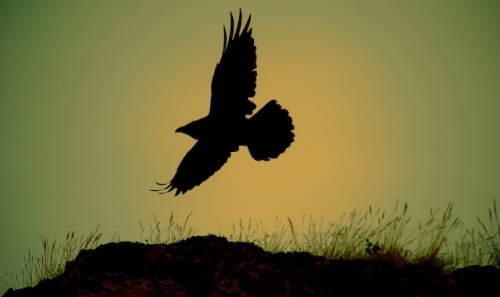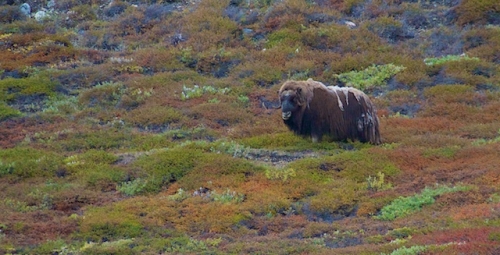East Greenland Expedition: Spotting Arctic Wildlife in Rypefjord
On the evening of August 25 we came to anchor in a rare shallow spot in Rypefjord. Early the next morning, a few groups set out for some great hikes and kayaking within sight of the Eielson Glacier, named for a Norwegian American aviator, Carl Benjamin Eielson (1897-1929). In 1928 Eielson made a pioneering flight with Sir Hubert Wilkins from Pt. Barrow Alaska to Spitsbergen.

Rype means ptarmigan, and indeed some of these Arctic birds were spotted by a few of the hikers. The ptarmigan’s Latin name – Lagopus muta – reflects its adaptation to this severe environment, roughly translating to ‘silent hare-foot’. The birds have few vocalizations, and enormous feet for walking in heavy snow.

Some Arctic hares were also seen, and a handful of birds, but the big prize of the day were Muskox. Several small groups were scattered across the valley, and dozens of skeletons were seen – evidence of hunting pressure from the village of Ittoqqortoormiit at the mouth of Scoresby Sund.


Muskox are named for the strong odor males emit during the rut. They are not oxen, but more closely related to sheep and goats and are one of the few species to survive the large scale Pleistocene extinction event. Thick hair camouflages their actual size – they appear much larger than they are. An average adult weighs about 285kg (630lbs); an apparently similar-sized bison can weigh twice as much. Current world population is estimated at 80,000-125,000 individuals, with more than half of those on Banks Island in the western Canadian Arctic.
Ready to learn more?
Determine whether life aboard The World is the right fit for you. Talk to one of our Residential Advisors today to learn more about this unique lifestyle, details of upcoming Journeys and Expeditions, and ownership opportunities.



